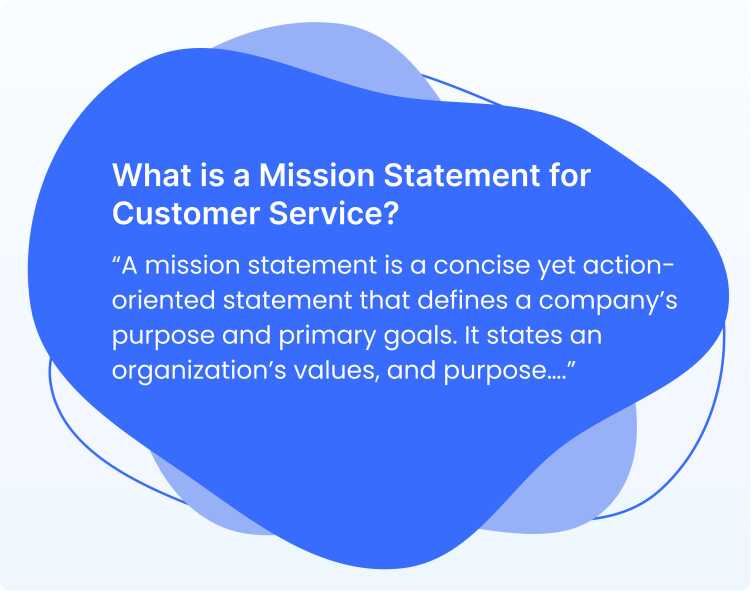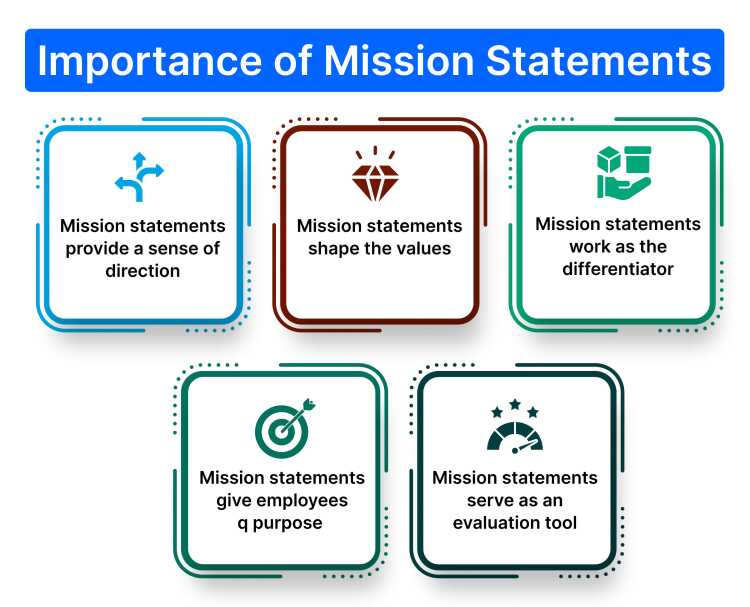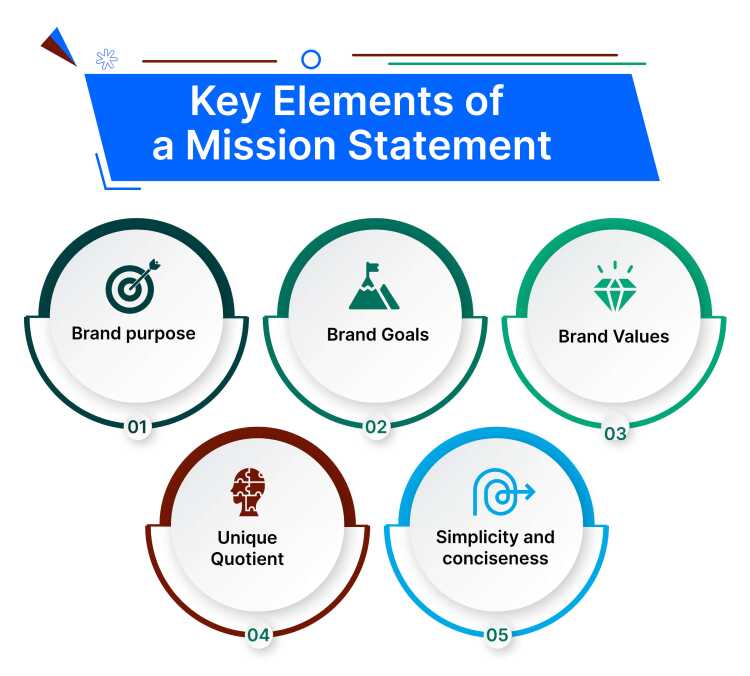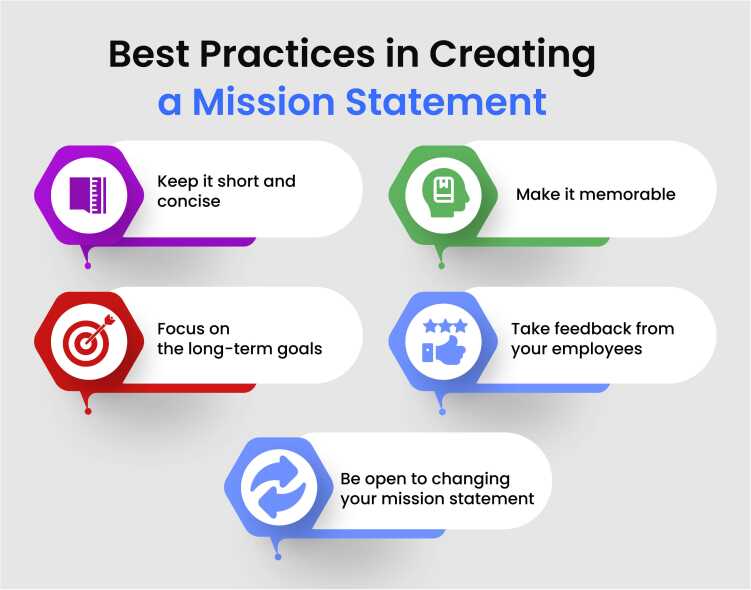The Best Customer Service Mission Statement Examples
- March 1, 2023
- 10 mins read
- Listen

Have you ever realized why you choose to buy products or services from the brands you do? Or, have you ever wondered what draws you towards a particular brand when you know there are plenty of other viable options available around?
You obviously like the quality of the product and service on offer, but is there something else that makes you loyal to them?
Well, chances are, maybe, you like their commitment to service. You like how they put customer service at the heart of everything they do. You also like the fact that the company you align with continuously works for customer happiness and satisfaction.
More importantly, you know the brand you trust is committed to providing exceptional customer service as it has a well-defined customer service mission statement. You know it has a culture of service excellence, and it can go to any length to maintain its value.
So, clearly, you ideally like to buy a product or service from a company whose mission and vision are centered on adding value to customers. You put your time, money, and energy into a brand that cares for its customers.
In this article, we will discuss the significance of a mission statement for customer service, why it’s important, what it includes, and how a company can craft one for achieving success.
What is a Mission Statement for Customer Service?
A mission statement is a concise yet action-oriented statement that defines a company’s purpose and primary goals. It states an organization’s values and purpose and also outlines what it strives to achieve and how it plans to reach its goals.

A mission statement is written for all the stakeholders of the business and concerns everyone, from the customers the employees, business partners, and investors. A well-crafted mission statement can serve as a guide for decision-making, binding the entire organization towards a common cause.
The purpose of a mission statement is to impart a sense of direction to the organization, work as a guiding force for daily operations, and maintain a sense of excellence in customer service. And since goals and objectives are dynamic concepts, a mission statement can change over time to align with the company’s existing progress.
Importance of Mission Statements
Mission statements are important for organizations of all types and sizes as they define the goals. They clearly lay out the purpose driving a company and also outline the values that work as a motivator for every stakeholder.

Some of the key reasons that make mission statements important include –
- Mission statements provide a sense of direction – A well-crafted mission statement provides a sense of direction to organizations and helps them maintain focus on achieving their objectives.
- Mission statements shape the values – One of the key benefits of mission statements is their ability to serve as a tool for shaping the values of an organization and filling a sense of purpose among stakeholders towards a common cause.
- Mission statements work as the differentiator – The role of a mission statement is to clearly communicate the values of an organization that strives to make those values the differentiator in the market.
- Mission statements give employees a purpose – A well-defined mission statement can not only help attract and retain customers but also inspire and motivate the workforce. It can prove a great tool for ensuring a sense of purpose to employees.
- Mission statements serve as an evaluation tool – Organizations craft mission statements to set a specific boundary for their performance and also measure success in terms of aligning with the values.
Key Elements of a Mission Statement
A mission statement should convey the reason why your company exists, what it does, and what it aspires to achieve. It has to outline the customer service vision in a concise yet well-rounded manner.

The following key elements should be part of a well-written mission statement:
- Brand purpose – What is the aim to provide the product and service you do, how does your product or service help customers, and who are you targeting?
- Brand Goals – Why does your company hope to achieve both in the short-term as well in the long-term? What do your goals mean for customers?
- Brand Values – What values does your company follow? What beliefs and principles drive the actions?
- Unique Quotient – What makes your organization unique, and what sets it apart from competitors in the market?
- Simplicity and conciseness – Is your mission statement easy to understand, relatable, and more importantly conveying the essence in a brief manner?
Mission Statements vs Vision Statements
Many in the industry assume that both the terms “mission statement” and “vision statement” are the same thing and they even use it interchangeably. Well, they are not the same, and in fact, both stand for different things. But yes, both could be great customer service tools as well.
There exist some marked differences between a mission and a vision statement and they include –
- Immediacy – A mission statement is crafted to outline what a company is doing right now or where it stands in the present while a vision statement states where it wants to be in the future.
- Focus – A mission statement describes the purpose of an organization and the strategies it plans to achieve the goal. On the other hand, a vision statement outlines the aspirations of the organization.
- Time-frame – A mission statement lists out the focus area on a short-term basis, say for a period of 1-3 years while a vision statement is for the long-term, i.e. for a 10-year period.
- Specificity vs abstractness – Out of the two, the mission statement is specific while the vision statement is abstract in the sense of outlining the organization’s intent and goals.
- Scope – While a mission statement mostly focuses on what an organization does and for whom, the vision statement can be broad in terms of including other factors that may or may not have a direct bearing on the business.
- Audience – The purpose of a mission statement is to serve as an internal inspiration tool for everyone concerned with the decision-making process. A vision statement may also expand its outreach and include the aspirations of wider stakeholders.
Tips for Creating an Effective Mission Statement for Customer Service
Creating an effective mission statement is definitely an art, and you need to approach it that way only. The key is to convey your brand’s essence and spirit as succinctly as possible and give customers something memorable to relate to.
You can follow some of the tips for creating a mission statement for customer service.
1. Explain What Your Company Does
When you set out to write a mission statement, always start with the basics – explain what your company actually does. Obviously, the purpose is to show your target audience what product or service you offer.
The explanation you provide should help customers know what you offer and why they should buy from you. It has to explain how your offerings can solve customer service problems. Since customers are concerned with value, make sure your mission statement lists that.
Once you have listed down your answers and made it clear how your offers are beneficial for the target audience, you can move to the next step.
2. Add Your Company’s Core Values to the Sentence
Now that you have created a basic statement of what your business does, you need to add core values to the mix to give a broader picture to your audience. Adding core value means you need to write the principles that guide your business.
You also need to add what motivates your business to do what it does, and how are your actions guided. Here, you should choose the words that really define your company’s spirit and that really drive your company forward.
Some of the popular core words that you can add include “integrity”, “diversity”, “innovation”, “responsibility”, “adaptability”, “excellence” etc.
3. Blend Your Core Values with Your Offers
Now that you have listed down what your business intends and have also identified the core values, it’s time to blend both together to ensure a bigger and clearer picture for your audience.
For example, suppose “responsibility” is the core value you want to highlight. In that case, you should create a sentence where you can show how you take great care in offering the best product or service, or your offers aim to help customers rather than earn profits.
4. Frame a Sentence that States Your Business Purpose
A mission statement is meant to give a short summary of a company’s purpose. And when we say “short”, it could mean a single sentence, or a paragraph, depending on what suits your business needs and how succinctly you want to convey the information to the audience. The idea behind having a mission statement is to choose words that convey your brand spirit and ethos to the audience.
Best Practices in Creating a Mission Statement
There are some do’s and don’t that you need to consider while creating a mission statement for your company. They include –

- Keep it short and concise, make sure you say the things in just a few sentences, and avoid lengthy paragraphs
- Make it memorable so that the prose stays etched in the minds of your audience. Avoid a long drawn-out statement as it can be boring.
- Focus on the long-term goals as such mission statements look convincing and paint a bigger picture.
- Take feedback from your employees as they are the people who have the best idea of what your brand stands for.
- Be open to changing your mission statement if you feel it does not reflect the true spirit of your company.
Popular Examples of Customer Service Mission Statements
Here are some of the popular examples of mission statements from across industries, and the world.
Google – “To organize the world’s information and make it universally accessible and useful.”
Coca-Cola – “To refresh the world…To inspire moments of optimism and happiness…To create value and make a difference.”
Tripadvisor – “To help people around the world plan and have the perfect trip.”
JetBlue – “To inspire humanity — both in the air and on the ground.”
LinkedIn – “To connect the world’s professionals to make them more productive and successful.”
Amazon – “To be Earth’s most customer-centric company, where customers can find and discover anything they might want to buy online, and endeavors to offer its customers the lowest possible prices.”
Tesla – “To accelerate the world’s transition to renewable energy.”
Starbucks – “Inspire and nurture the human spirit – one person, one cup, and one neighborhood at a time.”
Microsoft – “To empower every person and every organization on the planet to achieve more.”
Nike – “Bring inspiration and innovation to every athlete in the world. If you have a body, you are an athlete.”
Harley Davidson – “More than building machines, we stand for the timeless pursuit of adventure. Freedom for the soul.”
Final Thoughts
Creating an effective mission statement is a key part of your brand-building measure, so you should do it with full intent. The focus should be on creating a sentence that lays out your business’ vision for the future yet inspires the workforce in the present. It has to be powerful and relatable so that your target audience can feel it and connect to it.
Frequently Asked Questions
It’s a concise, action-oriented statement defining a company’s purpose, values, and goals, guiding its focus on exceptional customer service and stakeholder alignment.
They provide direction, shape values, differentiate the brand, inspire employees, and serve as an evaluation tool, fostering a culture of service excellence.
Key elements include brand purpose, goals, values, unique quotient, and simplicity, ensuring it conveys the company’s customer service vision clearly.
A mission statement focuses on the present purpose and short-term goals, while a vision statement outlines long-term aspirations and broader future intent.
Examples include Amazon’s “To be Earth’s most customer-centric company” and Starbucks’ “Inspire and nurture the human spirit – one person, one cup, and one neighborhood at a time.”



